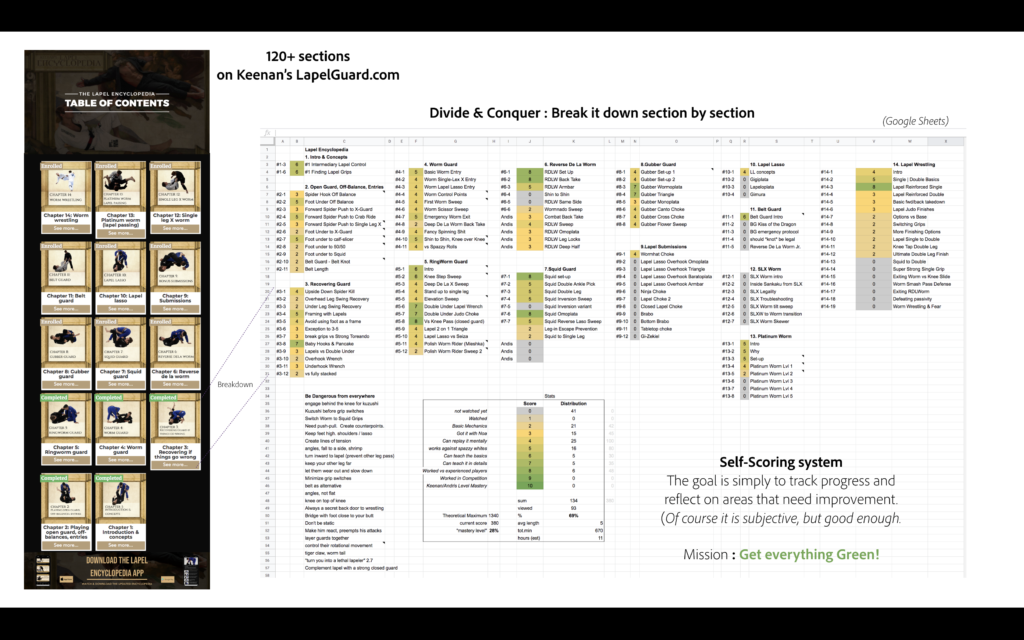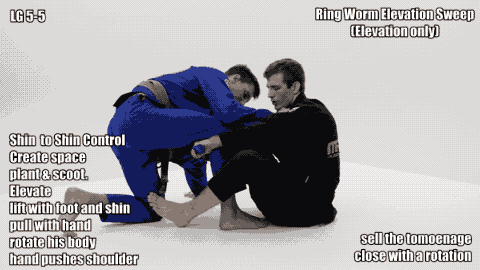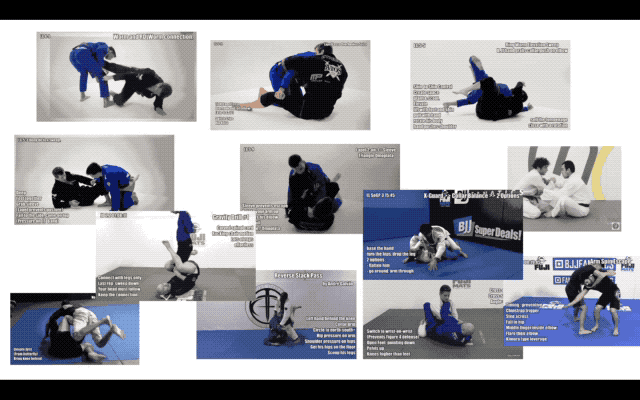This is a post about how I’m learning a brand new and complex set of techniques : The Lapel Guard by Keenan. At first it is perhaps as daunting to a beginner as entering the similarly deep world of leg entanglements. It comes with a new terminology and an internal logic as to how all the pieces fit together. Worm tails, worm holes and stirrups, here we go.
I approached it as a real project, mapping it out with clear goals and a tracking system that works for me. (see Google Sheet below)

First a quick review of the Lapel Guard (www.lapelguard.com) :
- $250 full price. I bought it during the 1 year anniversary for $150; not cheap, but worth it. I put a lot of value on the distilled knowledge of people who have put decades into their craft.
- About 9 hours of content, and you’ll have to re-watch several sections to fully absorb it all.
- 126 sections, and they keep adding more.
- One-time purchase (not a monthly subscription)
- Keenan is a thorough thinker and a good coach.
- Techniques are explained in details, as well as their underlying principles and how they fit in the bigger picture
- It’s great that they have an app! and a basic tracking system on the website (which section was completed)
Room for Improvement : (If Keenan or Cristiano ever read this)
- Please show at full-speed once at the beginning, and again at the end. No words, let your movements do the walking. Danaher is also guilty of that on his otherwise superb series. (so far the best example of doing it right I found was on the Ffion Davies Takedown series)
- Show, tell, show. I love the PEDs (Performance Enhancing Details) in all their glory, and the occasional banter, but with some sections we don’t ever see it demonstrated at real speed even once.
- Put some real footage in there when possible. If competition footage is under copyrights, then perhaps rolling footage from Legion or seminars.
- Too bad the progress on the app and the website are not synced.
I’m in the camp that “just show up and learn” is only half the picture. We all need to learn how we learn best. For me it mostly starts by taking notes for information retention (usually visual notes of sorts), and mindful practice to build muscle memory, before playing with it in sparring.
My general steps to learning something totally new and challenging:
- Identify high quality sources
- Map out the content (What, How much, how long)
- Go through the list item by item
- Identify specific sub-elements to drill
- Identify what the key control points are
- Extract a short footage (5 to 10 secs), watch it over and over, study it when commuting.
- Deconstruct the move with a good training partner *
- Try it at the gym with lower belts, gain confidence in the control mechanisms
- Teach it**
- Track and Score myself and move on to the next one.
*(I’m blessed with a great son who is also into Jiu Jitsu, and we built ourselves a 3meter x 3meter mini home dojo)
** (I’m lucky to be in charge of a few morning classes every month, and our old-school head coach is actually very enthusiastic about new information coming in, even from a Gaijin purple belt, and actively encouraging me to hold sessions to share my new findings)
For example the first time I saw section 4-9 “Fancy Spinning Shit”, it *did* blow my mind! What? Worm and RDLWorm are actually connected if you extract your foot and roll forward?! I had to re-watch it in slow motion to understand


The Lapel Guard Encyclopedia has 126 elements and counting, and there are some more from other sources (.e.g. I loved Andis Brunosvkis’s Lapel material in the Grappler’s Guide)
So I mapped them out by section
Came up with a color coding for a scale of 1 to 10
- not watched yet
- Watched
- Understood Basic Mechanics
- Got it with Noa (my son and best training partner)
- Can recall and replay it mentally
- works against spazzy whites
- Can teach the basics
- Can teach it in details
- Worked vs experienced players
- Worked in Competition
- Keenan/Andris Level Mastery
My goal is to go through the content periodically, be honest with myself as to what I can and cannot do yet, and gradually see the whole thing becoming green with 8’s and 9’s and … the perfection of 10’s might be forever out of reach…
Genesis of a lapel enthusiast : I got wrapped in the worm guard as a blue-belt, and it was so unfamiliar, so disruptive to my posture! I struggled to free my leg and regain my lapel, then he simply grabbed the other one. It was during a seminar by none other than Igor (Fat Ninja) Tanabe when he visited our gym as a brown belt, and it planted the seed that it was something very potent that I had better learn.
The problem was that nobody at my gym really played the lapel guards, so how was I supposed to learn it and learn how to defend it? I made a mental note that after all the Danaher and Lachlan series I bought on BJJ Fanatics, I’d eventually get to the Lapel. And I did!
Now a few months later and I do feel comfortable switching from the Ring Worm to the Worm or Squid Guards, always keeping an eye for an opportunity to set-up the powerful Reverse de la Worm, and developing a feel for winning the knee-above-knee battle. The closed guard is often a fall back, and from there too the Lapel gives tremendous control, and not just via the Gubber Guard. Getting to a good lapel position can be a struggle, but once you get familiar with all the control points; stirrups, lasso, lapel framing, etc. as well as switching grips, you start to see options everywhere : SLX Worm, Polish Worm Rider, and of course you can always try to stand-up and do some Lapel Wrestling…
The feeling of a taut lapel wrapped behind your opponent’s knee, while your other hand pulls on the collar, removing the little slack that was left : that’s pure kuzushi.
To learn to defeat something in BJJ, first you must become proficient at it. I’m slowly becoming the resident lapel expert at my gym, and already as people around me pick it up, it’s giving me feedback into both how to control the positions better, and also what to look for to deny the grips or prevent the situation from getting worse.
“Why would you ignore 50% of the human body?” (Leg locks)
“Why would you ignore 20% of the gi ? “ (Lapel Guards)
Learning takes discipline, and sometimes it’s more than just the discipline of showing up. Have fun!
Lapel Guard Encyclopedia by Keenan ? : 10/10 would recommend!
Lapel Stuff by Andris Brunovskis on the Grappler’s Guide ? : 10/10 would recommend
P.S. : using Gif Brewery to make the animated gifs

